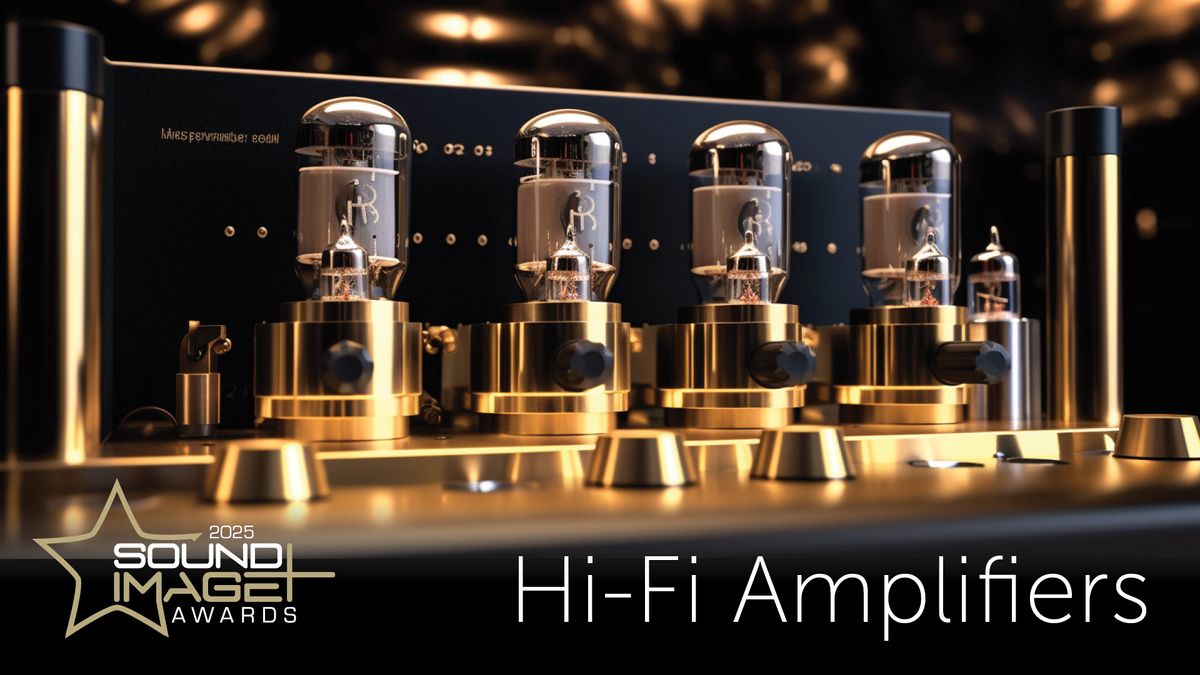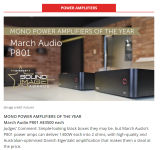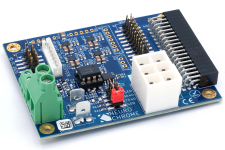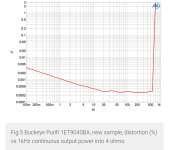SmartOne_2000
Active member

Sound+Image Awards 2025: the HI-FI AMPLIFIER & DAC winners
Meet our integrated, preamp and power amplifier winners and our DAC winners from the 2025 Sound+Image Awards



No its an old picture.@Alan March Has there been a recent change made with your enclosures that have restored the model number on the front, I see in the above Sound + Image Awards there is "P801" printed in the bottom right corner now, have all your models seen this change too like the P482 & P481 amps?
And the flip side is that if one has a reflective room, then directivity is importantly, or a narrow directivity may be helpful.You need to be careful when talking about "frequency response". The tonal balance of a speaker playing in a room is not soley dictated by the on axis frequency response. The room reflections, wall, floor and ceiling play a massive part.
As such the directivity characteristics of the speaker are crucial. The reflections must be similar in balance to the on axis. Also the wider the directivity the more overall bright the balance will be. In room measurements should always indicate a falling response with increasing frequency. Getting the gradient of slope right WRT the directivity is the critical factor.
Yeah - obviously as you have a low distortion amp.Looking at just the on axis frequency response will tell you virtually nothing about how a speaker sounds playing in a room.
Again, I don’t buy into the "euphonic distortion" concept. I have never found audible levels of distortion to sound good.
…
The way I figured out that your’s were low distortion, is because it sounded somewhat quiet.
Having excess 2nd and 3rd harmonic, and even more so having higher order harmonics is something that the brain uses to determine SPL.
Historically, and most people with even a small fleck of grey beginning, just know that the way one knows it is subjectively loud, is when they turn it up and hear the distortions… and then they turn it back just a bit.
…
Hey Alan ... I guess you going to increase the price of the P801 (and other models and products I guess) to reflect the new tariffs. If so, when will the new prices be reflected on the website?
Got any links to proper research that supports this euphonic distortion theory? We will probably have to agree to disagreeAnd the flip side is that if one has a reflective room, then directivity is importantly, or a narrow directivity may be helpful.
Yeah - obviously as you have a low distortion amp.
The point was that many people do like some distortion.
And usually the speaker’s distortion dominates what the amps are doing.
Usually people using Purify drivers, and Purify amps have a low distortion combination.
This combo can make the system sound quieter than an app says that SPL is at… I’ll quote myself again, at the risk of binge irksome…
So, for the dual P801 configuration, that is about $4K, then add the 10% Australia tariff to bring the total to about $4,400 out of pocket?No, this is the great misunderstanding many Americans are labouring under. We are getting a lot of questions from customers about it.
We the manufacturer / exporter do not pay the tariffs.
Tariffs are a tax levied on *you* the US consumer and is collected by the US government.
So you buy the product from us as normal. There is no increase in price. However, the courier (DHL in our case) will contact you the consumer when the product arrives in the US for payment of the tariff tax prior to final delivery. DHL are effectively the customs brokers to the US government.
This will no doubt discourage some US sales, but we are just concentrating on developing other markets. Massive increase in enquiries/sales from Canada for example. Europe has increased too.
Sadly, the only people losing out in all of this are the US consumers.

Seems about right but just for clarity it's a 10% tariff imposed by America on Australian products but paid by Americans.So, for the dual P801 configuration, that is about $4K, then add the 10% Australia tariff to bring the total to about $4,400 out of pocket?
Alan, a new Purifi-specific (optimized?) universal buffer from Neurochrome has just arrived, using the LM4562 buffer. How does it compare to the Ultra Buffer?
View attachment 316
It has specific jumper settings for the 1ET400, 7040SA, 9040BA, and other Purifi amp models. Not sure what these jumpers are supposed to do (gain settings optimized for the different Purifi models?). It also offers gains of 0 dB (1.00×), 11.6 dB (3.80×), 13.0 dB (4.47×) and 13.2 dB (4.57×).
Seems about right but just for clarity it's a 10% tariff imposed by America on Australian products but paid by Americans.
Please correct me if I'm misunderstanding Alan.
Probably was optimized for 4V XLR sources?Lm4562 is not a good choice for the updated Purifi modules. It is prone to RF problems and is higher noise than alternatives.
Also, 13.2dB gain isn't high enough to get the 1ET9040 module to full power output with a 2 volt RCA source. It will get to about 575 watts instead of the rated 750 watts.
All this, plus I can see from just looking at the board, that it's implementation/topology means it will be noisier than our ultra buffer. DIP sockets for the op amp is sub optimal.
Then why gave a 27dB gain setting? 23dB is correct.Probably was optimized for 4V XLR sources?
@Alan March I just noticed that Purifi have released a new "Deluxe" edition of their input module (FE05) the EVAL5 board, https://purifi-audio.com/shop/eval5...,8692,8693,8694,8695,8700,8696,8697,8698,8699Then why gave a 27dB gain setting? 23dB is correct.

Alan... have you thought of prioritizing your business for the US market? I'm talking about advertising in well-established, wide-circulation magazines such as Audioholics and Secrets, as well as attending consumer audio shows like CES, CEDIA, and AXPONA, which is currently ongoing (or may have already concluded). It will be in Chicago, IL, from April 10 to 12 next year, so there's plenty of time to prepare. The travel cost from Australia might be a bit of a pinch, but the exposure will be worth it. These shows attract many European and Asian audio manufacturers, even though some focus more on video and technology gadgets than audio.

